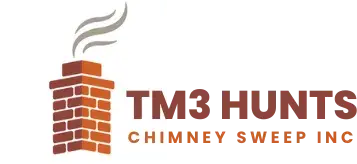Maintaining a clean chimney is crucial for the safety and efficiency of your home. One of the most effective methods in chimney cleaning today is the use of rotating brush technology. This advanced cleaning method not only improves cleaning effectiveness but also helps prevent potential fire hazards associated with creosote buildup. Let’s explore how this technology works and why it’s beneficial for homeowners.
What is Rotating Brush Technology?
Rotating brush technology involves the use of specialized brushes that spin at high speeds to dislodge soot, debris, and creosote from the walls of the chimney flue. These brushes are typically made from durable materials designed to withstand the rigors of repeated use, ensuring thorough cleaning without damaging the chimney structure. The rotation allows the brush to cover a larger area, making the cleaning process more efficient than traditional methods.
Benefits of Using Rotating Brushes in Chimney Cleaning
There are several advantages to using rotating brushes for chimney cleaning:
- Thorough Cleaning: The spinning action of the brush effectively reaches all surfaces within the chimney flue, ensuring that even stubborn buildups of soot and creosote are removed.
- Time Efficiency: Compared to manual cleaning methods, rotating brushes can significantly reduce the time required for a thorough clean, allowing chimney professionals to serve more clients in a day.
- Improved Safety: Regular chimney cleaning with rotating brushes minimizes the risk of chimney fires by effectively removing flammable creosote deposits, helping to ensure the safety of your home.
- Adaptability: Rotating brushes can be customized with different sizes and stiffness levels, allowing them to be used in a variety of chimney types and configurations, including those with bends or multiple flues.
How Rotating Brush Technology Works
The process begins with the chimney technician inserting the rotating brush into the chimney flue. Using a power source, the brush spins as it is pushed up and down the flue. This action scrubs the inner walls, breaking apart and collecting soot and creosote. The debris is then vacuumed away, leaving the chimney clean and ready for use. This method is efficient and helps reduce the mess often associated with chimney cleaning.
When to Schedule a Chimney Cleaning
Homeowners should consider scheduling a professional chimney cleaning at least once a year, especially if they use their fireplaces frequently. Signs that your chimney may need cleaning include:
- Increased smoke production while using the fireplace
- Unpleasant odors coming from the chimney
- Visible soot buildup or creosote on the chimney’s interior
Conclusion
Rotating brush technology represents a significant advancement in the field of chimney cleaning. Its efficiency, effectiveness, and safety benefits make it an essential tool for chimney professionals. By investing in regular chimney maintenance, homeowners can ensure the longevity of their chimney systems and enjoy the peace of mind that comes with knowing their fireplace is safe for use.
READ MORE:
